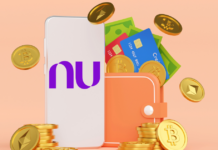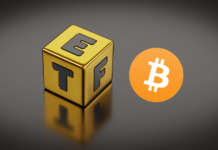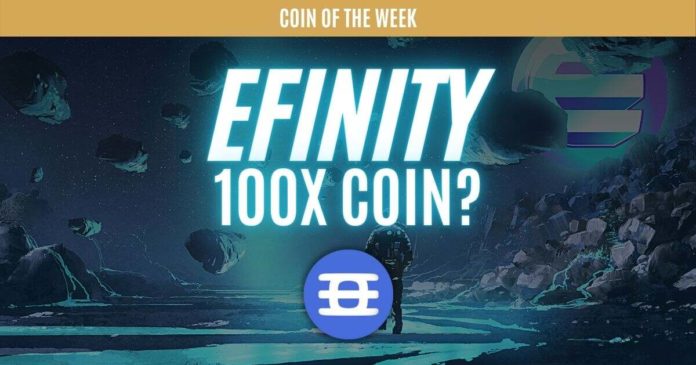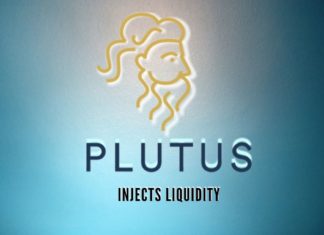Introducing the latest and greatest projects weekly, AltcoinBuzz proudly presents its first “Coin of the Week”. This week, it runs on Enjin and might leave skid marks when you see its price last year – Efinity!
Today we present the Efinity (EFI) coin and project developed by Enjin. Here, we explain why we’re so excited about Efinity, the risks involved, the composition of the team, and everything else.
Table of Contents
Why we are so excited about Efinity?
Efinity managed to sell $20 million worth of tokens in just under 3 hours. In a market trading sideways, this feat truly is remarkable, and makes Efinity a force to be reckoned with.
However, we shouldn’t really be surprised given that Efinity was developed by Enjin, the pioneers of the NFT industry in 2017, and authors of ERC-1155 (the groundbreaking NFT token standard). As such, it is important to first understand Enjin – one the first NFT creation platforms – before we begin to talk about Efinity.
During the summer of 2018, Enjin officially launched its Enjin platform on the Ethereum mainnet. As a free platform-as-a-service, Enjin allows other game developers to issue fungible, and non-fungible assets as in-game Ethereum tokens. Since then, Enjin has evolved as an entire Ecosystem for NFT tools designed to facilitate the creation, distribution, storage, and integration of both fungible and non-fungible blockchain assets.
The Enjin’s integrated blockchain ecosystem comprises of:
- Enjin Platform
- Enjin Wallet
- Enjin Marketplace
- Enjin Explorer
- Enjin Beam
The platform provides the tools and solutions developers (and businesses) need to tokenize digital assets, and integrate them into software.
The result of all that is over 20 million gamers worldwide, 40 game developers and enterprises are using the Enjin Platform to issue NFTs, including Microsoft, Minecraft servers, and games for PlayStation, PC, iOS, and Android. Enjin’s tech is also being harnessed by companies like BMW and Samsung (Samsung Blockchain wallets supports ENJ and Enjin Coin token swap into their new BMW Vantage App).
There’s even Enjin’s achievement Timeline accessible to everyone to learn more about what they have accomplished.
In fact, the credibility of Enjin Coin is so high that it has jumped over Japan’s strict regulatory hurdles to become the first gaming cryptocurrency to be whitelisted for use in the nation.
But there is a slight problem. Enjin is yet to onboard a blockbuster game, that killer app that would push ENJ’s utility into the traditional gaming world.
The problem Enjin is facing is quite generic in the NFT space – lacking interoperability and transaction speeds being painfully slow.
We strongly believe Efinity could address these issues.
In a nutshell, Efinity will bring in interoperability with multiple other chains like DeFi chains and NFTs. However, Efinity’s value proposition goes beyond gaming in Polkadot ecosystem. Efinity will provide the infrastructure that could open up NFTs for mass adoption and Enjin would be the epicenter for this massive change in the space.
Let us head straight into the process of evaluating Efinity, what is its value proposition, how will it disrupt the NFT space, and if are there any real risks.
About Efinity
Its time to think differently and that is what Enjin’s Efinity is attempting to do. Enjin – in collaboration with the web3 foundation – is building Efinity on Polkadot. Efinity is a next-generation blockchain which is being developed as a parachain on Polkadot.
Capable of processing up to 700-1,000 transactions per second (TPS), Efinity is a huge improvement on NFTs being traded on Ethereum network which is currently bottlenecked at around 15 TPS. Each Efinity transaction is confirmed in 6 seconds, making NFT transactions suitable for mainstream applications.
The Efinity Token (EFI) is used for all transaction fee payments on the Efinity network.
Efinity’s Value Proposition Explained
| NFT Creators are being forced to work with: | Apart from scalability, Efinity targets to disrupt the current NFT industry in the following aspects: |
|
|
Efinity being a parachain means the underlying layer, run by Polkadot’s Relay Chain, takes care of consensus, and end users don’t have to pay the price of validation.
Gas fees will still occur but by staking EFI in the Fuel Tank, users can enjoy subsidized gas fees. Also, the transaction fees on Efinity are designed to stay in the background, and allow users to experience their favourite collectibles without worrying about how the network operates. |
| Inflexible smart contracts (NFTs are basically smart contracts and we cannot do much with them for example we cannot pass them from one game to another) | Bringing down the “Walled Gardens”
Enjin has always been working to enable seamless usage of NFTs. To facilitate that Enjin had introduced MyMetaverse. It is built on Ethereum as a cross-platform project that interweaves multiple gaming worlds into a unified Multiverse experience. For example – A Fortnite gamer spends hours to win an in-game item. Now he wants to move to Clash of Clans and wants his in-game Fortnite item along with him. Efinity will make it possible. |
|
With Efinity, Enjin will build an important part of what it calls a multi-chain NFT ecosystem.
Efinity will be a hub for all fungible and non-fungible tokens. That’s because the Paratoken standard accepts tokens from any other chain, including the popular ERC-721, ERC-1155, and ERC-20 standards. This will create a network effect attracting increasing volumes of transactions. This is awesome because NFT interoperability across chains will be established and this will be the stepping stone for mass adoption of NFTs. |
| Networks like Bitcoin and Ethereum reward their miners but for NFT participants there are no rewards. The full share of generated tokens are given to miners only. As a result, NFT-only holders can only hope for price increases to see any gains. | Compensating network participants
Efinity is set to change this as it will reward network participants, such as NFT users. With EFI, participants collator nodes are responsible for transactions on the Efinity parachain, and the network pays out EFI to participants. In addition to collator node operators, the following network participants will be rewarded with EFI:
In a nutshell – Beyond its purpose for transaction fees on the network, EFI is created so those present at the inception of Efinity would see a constant stream of rewards. |
The Team
Efinity shares the same team layout as Enjin’s leadership team. Maxim Blagov is the functioning CEO and the inventor of ERC1155 token standard. Witek Radomski is the CTO and he has authored ERC-1155 token standard.
Efinity’s Tokenomics
The total supply of EFI is 2,000,000,000 tokens.
- 35% of the EFI will be directed towards the growth of Efinity, the Polkadot parachain (this means the project will not fall short of funds to keep the development going).
- 15% of the total supply is reserved for nominator staking and pools. These tokens are provided as rewards for running the parachain during the first 8-10 years.
- This is good because it ensures the early adopters who secure the network receive incentives over a long period of time. This will encourage early participation.
- 10% team
- 20% company
- 20% of the tokens have been distributed in seed, early, strategic, and public sale rounds. Unlike other Polkadot projects, Efinity is not conducting any token airdrop. As is evident only a small percentage of the total EFI supply will circulate in the market initially. This is a good thing for any project because the lower the circulating supply, even a slight increase in demand can translate into big upward price movement.
Efinity’s Ecosystem
Efinity is being built around Enjin and Polkadot ecosystem by a team of trusted developers. Some of the important points that you must note are:
- Because Enjin has its roots in Ethereum, Paratokens like EFI will be backward compatible with ERC-1155.
- Tokens created on other chains (for example, ERC-20, ERC-721, and ERC-1155 on Ethereum) can be imported to Efinity using a bridge.
- Efinity proposes to provide buyers and sellers with a robust suite of tools for creating and filling orders for any token with its Marketplace. Efinity will also become the world’s first trustless token marketplace that rewards anyone providing liquidity for NFTs. The flagship NFT marketplace on Efinity will be called NFT.io.
Growth & Longevity Prospects
EFIs utility and its tokenomics look pretty promising. The vesting periods has been smartly planned and there will be no sudden supply shock of EFI in the market that could disturb the delicate demand vs supply balance.
Circulating supply is very low – initially only 10M. This establishes scarcity and hence the possibility of a sharp price growth.
Fuel Tank – EFI tokens can be staked to a fuel tank for a fixed period of time. The Fuel Tank will basically lock a certain percentage of circulating supply of EFI. Imagine what happens- Demand for EFI is rising and the circulating supply is lowering. It automatically pumps the price of EFI. But the question is why would an EFI holder lock his tokens. Well, by staking EFI users can enjoy reduced fees. With larger staking amounts and times, users can enjoy a 50% subsidy on the fees. That answers your question.
However, the Fuel Tank is not the only place that will lower the circulating supply. The EFI can be locked in Jumpnet too. JumpNet is Enjin’s Forever-free Ethereum scaling solution. It also creates utility for EFI. JumpNet basically allows each address limited free transactions. However, by holding EFI on JumpNet, users can increase the limits of their transactions on JumpNet. EFI on JumpNet will be called JEFI and for every 100 JEFI a user holds on JumpNet, their limits will be doubled (up to designated limits).
From the longevity perspective, Liquidity will not be a challenge for Efinity as users will be able to use Efinity Swap to swap tokens, and coins.
Efinity’s Competitors
https://unique.network/ is a competitor which has won multiple Web3 grants and is building an advanced NFT System.
- Unique Network is currently in Testnet and has an advantage regarding developments in substrate.
- Unique Network also has advanced features like Sponsored fees, Nested NFTs.
Apart from Unique Network there are no major competitors of Efinity in the Polkadot ecosystem.
Risk factors
Right now EFI is ready to circulate in the market but the product Efinity is still being developed. That means there is no Parachain and no working product out there. So why all this hype? That’s because Enjin is a trusted business model which has always delivered. However, if there is a delay, the excitement around EFI might be slightly dampened.
Why is this week so crucial for Efinity?
The very successful token registration event on Coinlist in June 2021 helped Enjin raise $21 million. Over 100 million EFI tokens were sold at a unit price of $0.20, but these were not distributed. On 4 August 2021 10% of these 100 million EFI tokens will be released.
This means that 10 million EFI tokens will be available in the market for trade, but we do not yet know which exchanges they will be available on.
However, we can try to make some educated guesses on its post-release price based on Coinlist’s listing history.
Solana’s registered sale event was conducted on Coinlist on 24 March 2020 at $0.22 per SOL. On 10 April 2020, SOL was listed on Binance. In the first several hours of trading, SOL climbed more than 500% from the open to a high of $1.33.
Another recent success story: Mina, the world’s lightest blockchain, completed its registered public sale on Coinlist in April 2021. On May 31, 2021, Mina tokens were distributed to the Coinlist members priced at $0.25. According to Coingecko Mina price history on June 1, 2021, Mina touched it’s all-time high of $9.09. – a 3536% price jump!
Do we see a pattern there? It seems when a potential project conducts a sale on Coinlist, immediately after the token distribution, the price just skyrockets.
It’s a no brainer that August 4, 2021, is going to be a big day for the EFI holders.
How will Efinity affect the price of Enjin tokens?
Interestingly, the release of EFI will bring in some good news for Enjin holders too which is currently trading at almost 700% up since the beginning of the year.
Here are 2 key benefits:
- The launch of Efinity will introduce a new level of utility for ENJ. Enjin coin 2.0 – staking. Enjin Coin holders will be able to stake their ENJ into nodes (in Efinity terminology, “collators”) and earn passive income in the form of Efinity’s native currency, EFI. Interestingly, 15% of the EFI supply (300 million tokens) has been set aside to reward the staking of ENJ.
- ENJ will be used to mint NFTs on Efinity and this infused ENJ will be automatically staked, and generate rewards in the form of EFI.
It is likely that this could very well supercharge ENJ.
Also, join us on Telegram to receive free trading signals.
Let’s face it, staying on top of every new altcoin project out there can be daunting and complicated. The good news is the Altcoin Buzz team has spent an insane amount of time researching and evaluating projects. With our network and knowledge of the industry, we have been putting together great resources and trading tips for our followers and know how to spot the difference between a red flag project and a 100x potential project. Join Altcoin Buzz Access to get front row access to short-term and long-term buying and selling opportunities.
Find out more about the blockchain and crypto space on the Altcoin Buzz YouTube channel.



























